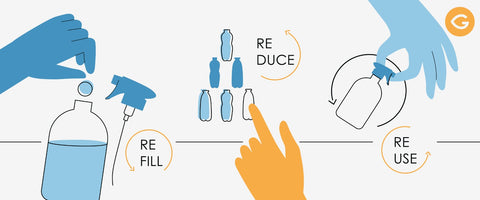As the new school year approaches, students and parents alike are preparing for the season of back-to-school shopping. Consider making a positive impact on the environment by opting for eco-fashion, also known as sustainable fashion, focused on creating clothing that is environmentally friendly and ethically produced. Here’s what you need to know before you make your next purchase.
Understanding Eco-Fashion
Eco-fashion encompasses a variety of practices aimed at reducing the environmental impact of clothing production. This includes using sustainable materials, implementing ethical manufacturing processes, and promoting fair trade practices.
- Sustainable Materials: These include organic cotton, bamboo, hemp, and recycled fabrics. These materials are grown or produced with minimal impact on the environment.Explore more about sustainable textiles through Textile Exchange, a global nonprofit that fosters responsible practices in the textile industry.
- Ethical Production: This ensures fair wages and safe working conditions for workers, often certified by organizations like Fair Trade.
- Low Impact Dyes: Using natural or low-impact dyes reduces the pollution caused by traditional dyeing processes.
- Recycled and Upcycled Materials: Incorporating recycled materials or upcycling old garments into new designs helps reduce waste.
- Educational Platforms: Explore resources like Eco-Age, where you can find articles, insights, and tips on embracing sustainable practices in your daily life and wardrobe.
Why Eco-Fashion Matters
The fashion industry is one of the largest polluters in the world. Traditional clothing production involves high water usage, toxic chemicals, and significant carbon emissions. Eco-fashion aims to mitigate these impacts through sustainable practices.
Environmental Benefits:
- Reduced Carbon Footprint: Sustainable materials and practices produce fewer greenhouse gases.
- Water Conservation: Organic farming and recycled materials use significantly less water.
- Less Waste: Eco-fashion promotes recycling and upcycling, reducing the amount of clothing that ends up in landfills.
Tips for Choosing Eco-Fashion for Back to School
- Opt for Quality Over Quantity: Choose high-quality, durable clothing that will last longer and reduce the need for frequent replacements.
- Thrift and Upcycle: Consider shopping at thrift stores like ThredUp or upcycling existing clothing.. This not only reduces waste but also gives unique character to your wardrobe.
- Buy Local: Support local artisans and businesses that use sustainable practices. This reduces the carbon footprint associated with shipping and supports the local economy.
- Ethical Consumer Guide: Visit Good On You, a comprehensive directory rating brands on their ethical and environmental performance, to make informed choices.
Back to School with Eco-Fashion
Incorporating eco-fashion into your back-to-school shopping not only helps the environment but also sets a positive example for others. Here are some ideas to get started:
- Eco-Friendly Backpacks: Choose backpacks made from recycled materials or organic fabrics. Brands like Troubadour offer stylish and sustainable options.
- Sustainable Footwear: Opt for shoes made from recycled or eco-friendly materials. Brands like Allbirds and Veja are known for their sustainable practices.
- Organic Cotton Basics: Stock up on basics like t-shirts, socks, and underwear made from organic cotton. They are soft, durable, and better for the environment.
- Secondhand Finds: Thrift stores like Goodwill often have a wide selection of gently used clothing that is perfect for back to school. Look for items that can be mixed and matched to create a versatile wardrobe.
- DIY and Upcycling Projects: Get creative by upcycling old clothes into new styles. This can be a fun and rewarding way to express your unique fashion sense while being eco-friendly. Check out resources like Instructables Fashion for DIY fashion ideas.
As you prepare for the upcoming school year, consider the impact your clothing choices have on the environment and society. By choosing eco-fashion, you can make a positive difference and promote a more sustainable future. Remember, every small step counts, and your choices can inspire others to join the movement towards sustainable fashion.




